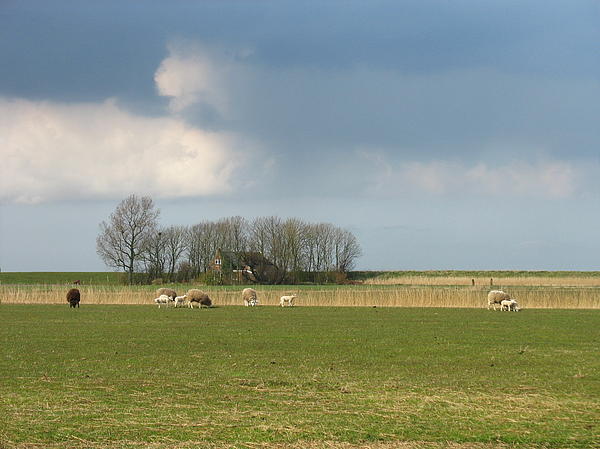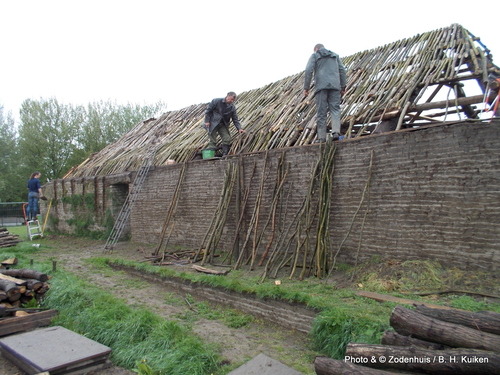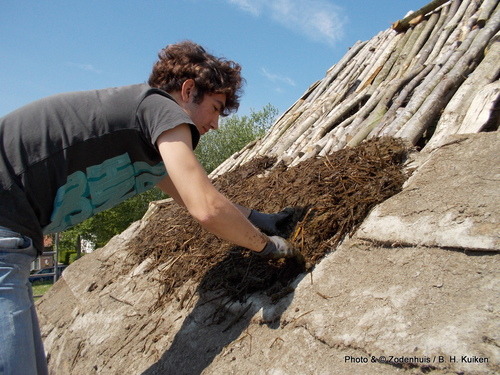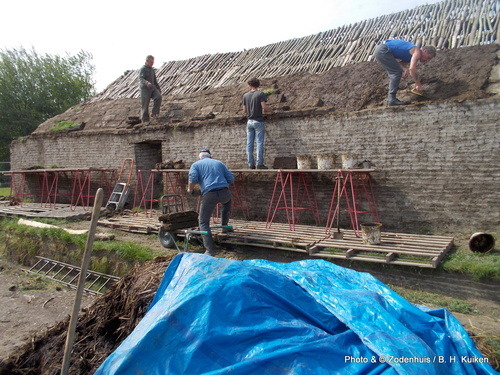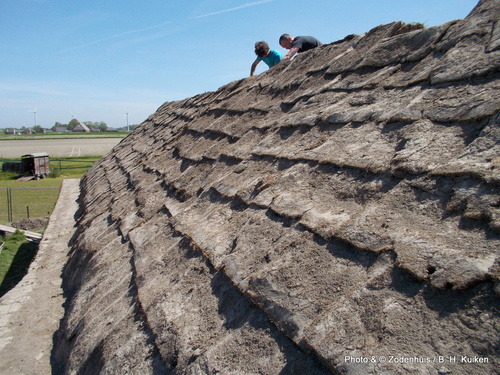I haven't been well enough to do much more than take occasional pictures of fungi or moss in a while (there's not a lot to photograph in November), and it's been cold and super windy (lots of downed trees, closed roads, and power outages) and pouring down rain and then frozen, but my mom and I went into the city to go shopping in mid November.
 |
| Moss on an old cinderblock, December 3rd. It thawed out, which is good because it was raining pretty hard and we had to go to the store again. |
She needed a Christmas present for her husband (she bought him an insulated coffee mug) and a yearly supply of looseleaf tea and I needed a winter coat, but we had a really hard time finding any coats under three hundred dollars. The most reasonable store we tried was Capital Iron, and their coats were just waterproof shells with a fleece lining (or without, even), not actually heavy-duty cold weather coats. I was wearing a dark grey sweater and toque and burgundy corduroys and told the saleslady I just wanted something plain and basic, but she kept showing me jackets covered in pink flowers that were very expensive. I would say I was looking for something plain in a dark colour, maybe blue or black, and on sale, and she would look around and hold up another expensive flowered jacket. There were plenty of expensive plain jackets, I don't know why the lady was determined to get me into something floral. My mom was getting annoyed, but I thought it was kind of funny.
Eventually the saleslady left us to look and we found a black jacket that was two hundred dollars. I didn't want to spend that much of my mom's money (I thought a light winter coat would be like $60), but I needed a coat and so that was my birthday present. I also got a pair of fingerless knitted hand warmers (they were $40, how are gloves even that expensive), and a belt ($18). My pants have gotten so loose they won't stay on anymore, which is a problem, especially since I only bought them in February and new clothes aren't possible, but a belt works. The store didn't have any change rooms, so I tried on a whole bunch of belts on the shop floor before I finally found one in the right size with enough holes. People were staring and probably saw my skin and how large my clothes are, but oh well. I couldn't buy something that didn't fit.
This was the first time I'd been out of the house in a month or so, and the Christmas decorations in the stores were very pretty:
 |
| Some more traditional Christmas decorations. |
I guess someone realised the rural market at Christmas could be profitable:
 |
| Decorations shaped like bacon (the white strips are sparkly) and frying bacon and eggs in a castiron skillet. |
 |
| Budweiser Christmas lights. They're $26.99 for either four or eight lights, I forget. |
 |
| Taxidermied deer heads and plaid Christmas balls. |
 |
| An artificial Christmas tree made out of lumber scraps, and Stanfields ($60 each). |
 |
| Pickup truck ornaments hauling Christmas trees. |
 |
| VW van ornament with happy camper, especially for the West Coast I bet. |
We don't have any decorations, but my mom says hers are all Nascar-themed, and my sister and her family have a tree:
 |
| Brutus the Christmas elf. My sister's four year old names everything Brutus these days. |
(I opened Facebook a few days later, and my brother in law in Texas had a picture of an elf that looked just like Brutus doing lines through a dollar bill with a mini bottle of Bacardi in the background. My sister was a mixture of amused and horrified, I think).
The Christmas lights on the Parliament Buildings in Victoria turned on at the end of November. I've never actually seen them in person:
I like twinkly lights, but I haven't seen very many. A few houses (like, two) on the way into town have one string of lights, and there's a doublewide trailer up the road that has a painted plywood cutout of Santa, but most of them show no sign that it's Christmas. I used to see a lot more as a child in other towns, I don't know if people have decided Christmas decorations are low-class or too much trouble and expense, or...?
I'm mostly managing to avoid the whole season by not going anywhere. I got an invitation from a family member for a brunch to "celebrate Christmas together as a family," and it was very kind of them to ask me but I just thought "oh God no." No thank you. It was nice to just totally skip the whole month (two months?) and all the
expectations that go along with it for all the years I lived in Muslim-majority
countries.
My mom was calling Christmas the "winter holiday" and our trip "winter
shopping" out of respect, she said. I tried to convince her that it was
fine to have Christmas (she doesn't even know of any other winter
holidays. Islam doesn't have one, except for the new year I guess,
which moves every year and isn't a religious holiday), but she refused to say the word
Christmas. I eventually figured out that she was refusing to even
acknowledge Christian-y culture because of the surge in
xenophobia following the Daesh attacks in Paris - the only recent massacre most people here have heard of, but I read about a new one by somebody somewhere pretty
much every day. It's hard not to just lose hope in everything.
It's not good here. The armed nationalism and calls for more death started as soon as the news broke. I uninstalled Facebook because I was tired of getting notifications every time someone posted or commented (the few people on my FB were pretty well behaved, but their friends weren't, and I really don't want to hear very many people's comments on it), and I've been mostly staying off the internet, not bothering to read past the headlines, and not talking to or seeing anyone in person. This is a small rural town, I already know what people here think of Muslims. Including some of my own family and neighbours, and I have to live here.
My mom obviously wasn't passing on most of the things people were saying to her, but she's putting up her own small resistance to all the gun-toting hostility. She says those people don't represent her country. I hope they don't. I don't think she would have done that a few years ago. She forbid me to become Muslim or to travel or marry (not that I wanted to) and I hardly heard from her for seven years; I didn't think she'd ever accept this, or that we'd ever reconcile. I don't know whether it was time that brought her around, or enough of me patiently explaining and posting photos of ordinary things and people on Facebook, or just wanting her child back.
Our doors don't lock and strangers keep walking into our house like they own the place and being rude (one of them made fun of my mom's clothing. She was wearing a red sparkly house dress a friend in Oman gave me. She loves red and shinies, but it's too fancy and foreign for this town), but I couldn't get my mom to let me install locks before. On the drive home from town my mom was talking about what a nice young man our upstairs renter was and how she hoped he would turn out better than his father, and I told her that he loudly and aggressively uses the n-word, and talks about women like they're fucktoys (I can hear him from downstairs, it's really gross and threatening to live with), and I was afraid. I was terrified for days after the Paris attack, because people know I'm Muslim, and what if someone had told him?
My mom was totally resistant to the idea of doing anything about it before (she thought she was the one being rude when she told intruders she owned the place), so I didn't expect her to consider it this time either, but she said that she would have my brother put in locks and tell the tenant to behave himself, and evict him if he didn't. Even though we need the money to heat the bedrooms in the winter and fix the leaks and hopefully do something about the rats.
It's been a few weeks and nothing has happened with the locks, but at least she was willing to address the problem. She came by a few days ago and said that she would bring me and my brother out to her house in the next village for lunch on Christmas day, and that there wouldn't be any alcohol or bacon (I really don't care if there's bacon present, I'm just not going to eat it. My mom used to put bacon in everything; anything with potatoes or pasta or cheese or beans or even greens would have bacon. The brussel sprouts always have bacon on them. It's kind of funny how much Canadians love bacon).
So hopefully everyone will be sober and behave themselves and that will be as much Christmas and group activities as I have to deal with. Which is a relief. I was starting to get better but I've come down with something else, so I may not end up being able to go.
 |
| Christmas decorations are still novel enough that I want to photograph all of them. Older guys in stores get grumpy about it. Too bad, I like them. |
























